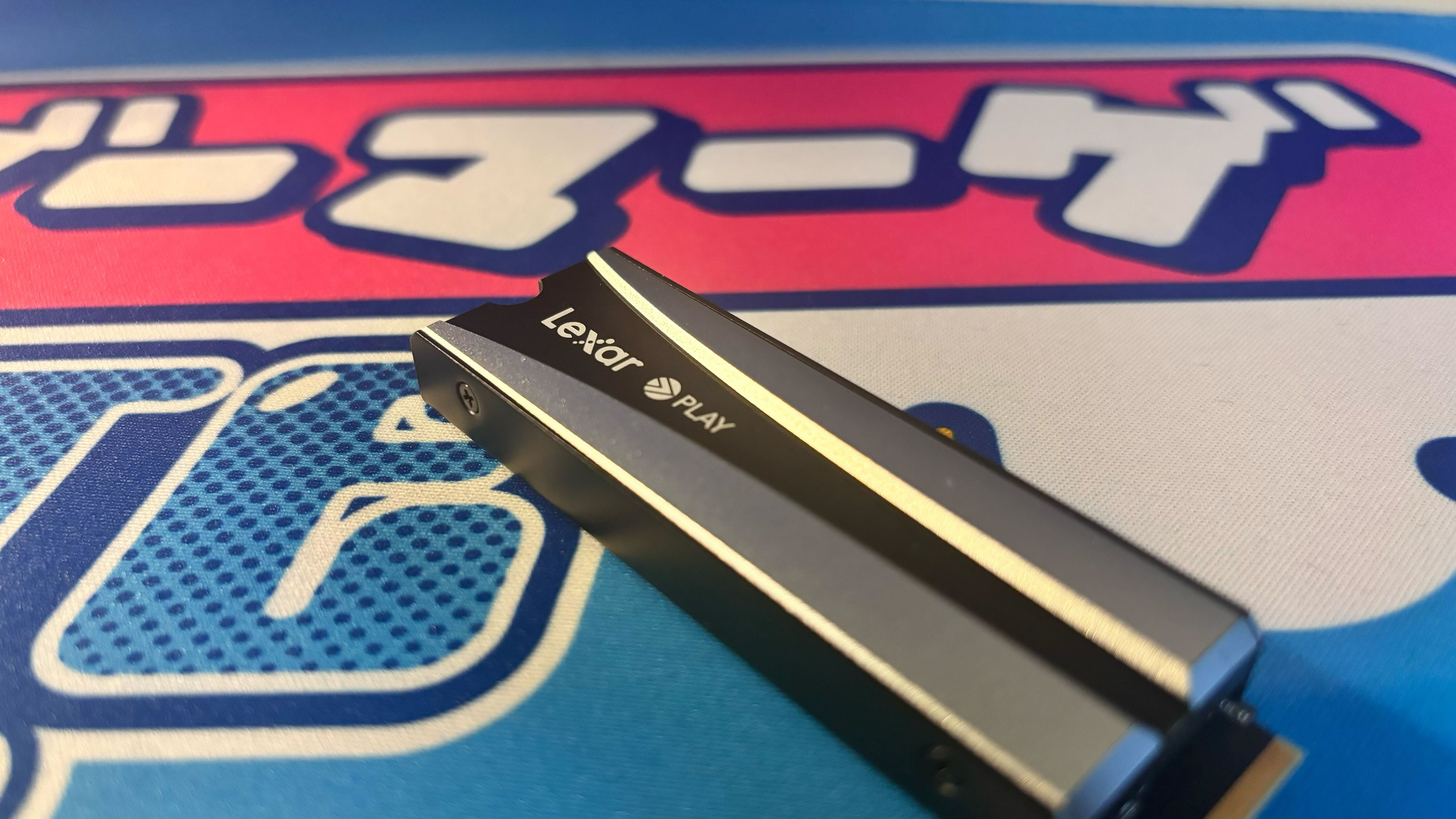TechRadar Verdict
The Lexar Play 2280 could be a solid option for PS5 owners given its average performance in our testing, but is just far too expensive at its current price. The lack of DRAM makes this drive a less ideal fit for PS5 than many competing models, which are often available at similar rates.
Pros
- +
Average performance
- +
4TB model available
- +
Large heatsink
Cons
- -
Poor value for money right now
- -
PS5 does not support Host Memory Buffer (HMB)
Why you can trust TechRadar
Lexar Play 2280: One-minute review
I would recommend the Lexar Play 2280 if you’re able to find it at a heavily reduced price. At the moment, the 2TB model will set you back around $229.99 / £174.99 and the 4TB is available for $379.99 / £329.99. This wouldn’t be too bad in most cases but it’s important to note that this is a dynamic random access memory (DRAM)-less model that uses host memory buffer (HMB) technology. A reliance on HMB would normally be associated with a much cheaper product and, although not a complete disaster on PS5, does mean that you lose a lot of potential speed on console.
When drives with DRAM, like the blazing fast Samsung 990 Pro and licensed models like the Seagate Game Drive M.2 SSD for PS5, can easily be found at similar prices to the Lexar Play 2280, there are very few reasons to consider this model above the others.
It’s a shame, as the Lexar Play 2280 still manages to scrape by in real-world scenarios. Though slower than other models in our copy testing, it achieved an okay reading of 6,135MB/s on the internal PS5 benchmark and offered perfectly serviceable performance with no major hiccups in the games themselves. The 2TB and 4TB capacities are also a good fit for most modern game libraries, especially if you own lots of large titles like Call of Duty: Modern Warfare 3 and Horizon Forbidden West.
With an 8TB model on the way later this year, I could still see the Lexar Play 2280 finding a good niche as a lower-cost alternative to many of the best SSDs for PS5 or best PS5 external hard drives. Lots of the manufacturer’s other drives have received substantial price cuts in the time after release, especially around major sale periods, so I’m optimistic that this will eventually be the case.
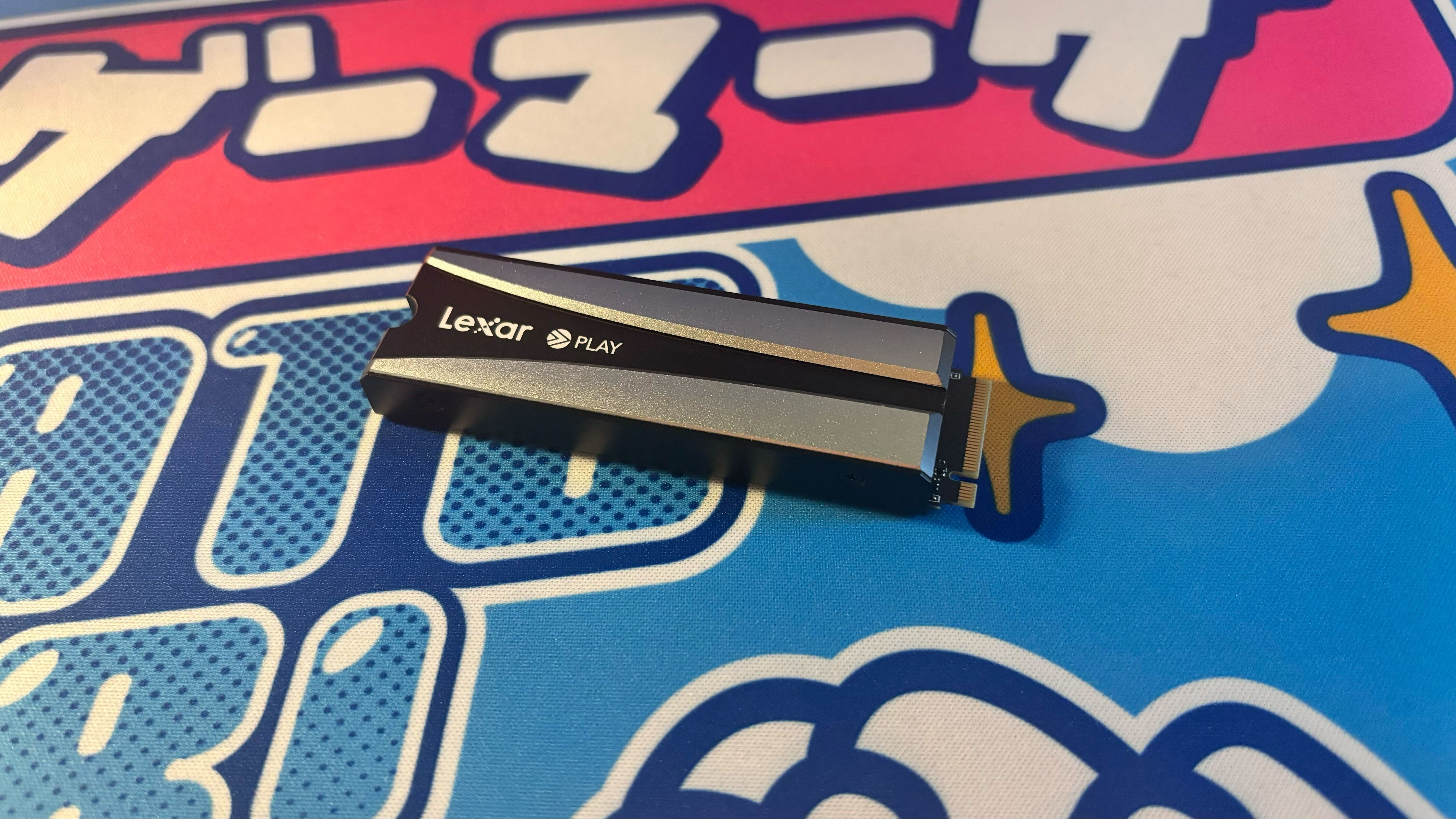
Lexar Play 2280: Price and availability
- 2TB is $229.99 / £174.99
- 4TB is $379.99 / £329.99
- Very high price for the specs
You can pick up the Lexar Play 2280 via Amazon. A 2TB model is available, which costs $229.99 / £174.99, in addition to a 4TB variant for $379.99 / £329.99. Both of these prices seem extremely high for what you’re getting, especially considering the lack of DRAM. You can easily find higher-spec alternatives at roughly the same prices, including premium options like the Samsung 990 Pro, Corsair MP600 Pro LPX, or Seagate FireCuda 530.
Even other Lexar drives are much better value. The 4TB Lexar NM790, another HMB model with a PS5 compatible heatsink fitted, costs just $281.99 / £229.99 at the time of writing. This is about where I would expect the Lexar Play 2280 to be, so it’s a little baffling that it’s currently not available at around this price.
Lexar Play 2280: Specs
| Price | $229.99 / £174.99 (2TB) / $379.99 / £329.99 (4TB) |
| Capacity | 2TB / 4TB |
| Quoted read speed | 7,400 MB/s |
| Quoted write speed | 6,500 MB/s |
| Durability | 6,400 TBW (4TB) |
| Warranty | 5-year |
Lexar Play 2280: Design and features
The Lexar Play 2280 has quite a stylish design, though not as elaborate as some competitors. It's fitted with an absolutely mammoth heatsink, one so large that I was initially slightly worried that it wouldn't fit in the PS5. Thankfully, the installation process was very smooth and it slotted in nicely under the console’s SSD bay cover. The heatsink is predominantly black, though does have two silver fin-like shapes on top that give it some extra flair. It’s also labeled with a white Lexar Play logo, creating some pleasant contrast.
In terms of features, this is an HMB drive. As previously outlined, this means that it does not have any DRAM. DRAM is usually used to store mapping information, effectively telling your machine where to find certain pieces of data quickly. This can improve performance and drive longevity, but often makes SSDs with DRAM more expensive than other models. In an HMB drive, this information is all normally stored memory of the host device instead. This is no problem for a PC but is not something that is currently supported by the PS5.
In practical terms, this can lead to much more uneven performance on your console. Sony itself states that users with an HMB drive “may experience slower-than-expected performance because the PS5 console does not support HMB.”
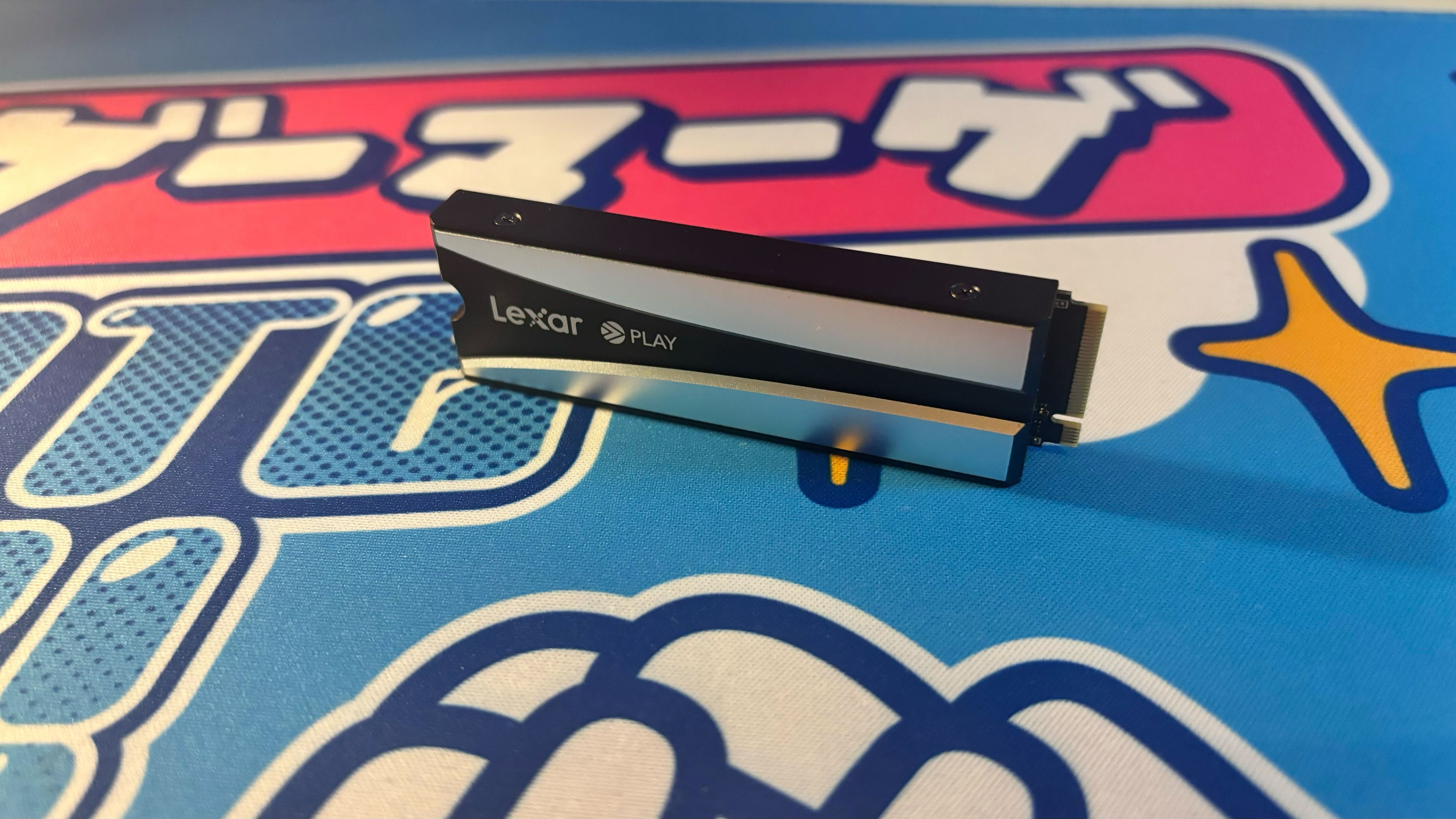
Lexar Play 2280: Performance
Despite the lack of DRAM, I found that the Lexar Play 2280 performed acceptably on the whole when you don’t consider the price. The 4TB configuration achieved a 6,134MB/s read speed in the console’s internal SSD benchmark, which is towards the lower end of what you would expect but still above the 5,500MB/s recommended by Sony.
It’s the kind of reading that you would find with a budget drive, which goes even further to show that the current cost of this model is a little ridiculous. For the sake of comparison, this figure is far below the just over 6,500MB/s achieved by the Samsung 990 Pro in the same capacity - a top-end drive that is a little cheaper than the Lexar Play 2280 right now.
Performance was just about okay in my other testing, which saw me copying a wide variety of files to the drive from the PS5’s internal storage. A 69.75GB installation of Zenless Zone Zero took 34 seconds to copy, while the 49.97GB Star Wars Outlaws was fully playable in 24 seconds. A 90.23GB installation of Alan Wake 2 copied in a respectable 48 seconds and the 85.72GB The Last of Us Part 2 came in at 38. Stellar Blade, which is 31.46GB, was copied in 17 seconds.
The Alone in the Dark remake, which comes in at 30.67GB, was copied in 18 seconds, and finally, the 9.49GB Asphalt Legends Unite was copied in 17. That very last figure is particularly high for the relatively small file size, demonstrating some of the shortcomings associated with HMB drives.
Thankfully unless you sit around moving games all day, you likely won’t notice a lot of this. I’ve been using the drive for a few weeks now, playing my usual rotation of games on it. During that time I did not experience any noticeable in-game performance differences when compared to playing on the PS5’s internal storage. Don’t get me wrong, the performance of the drive is fine overall, but just nowhere near what you would want or expect for the price.
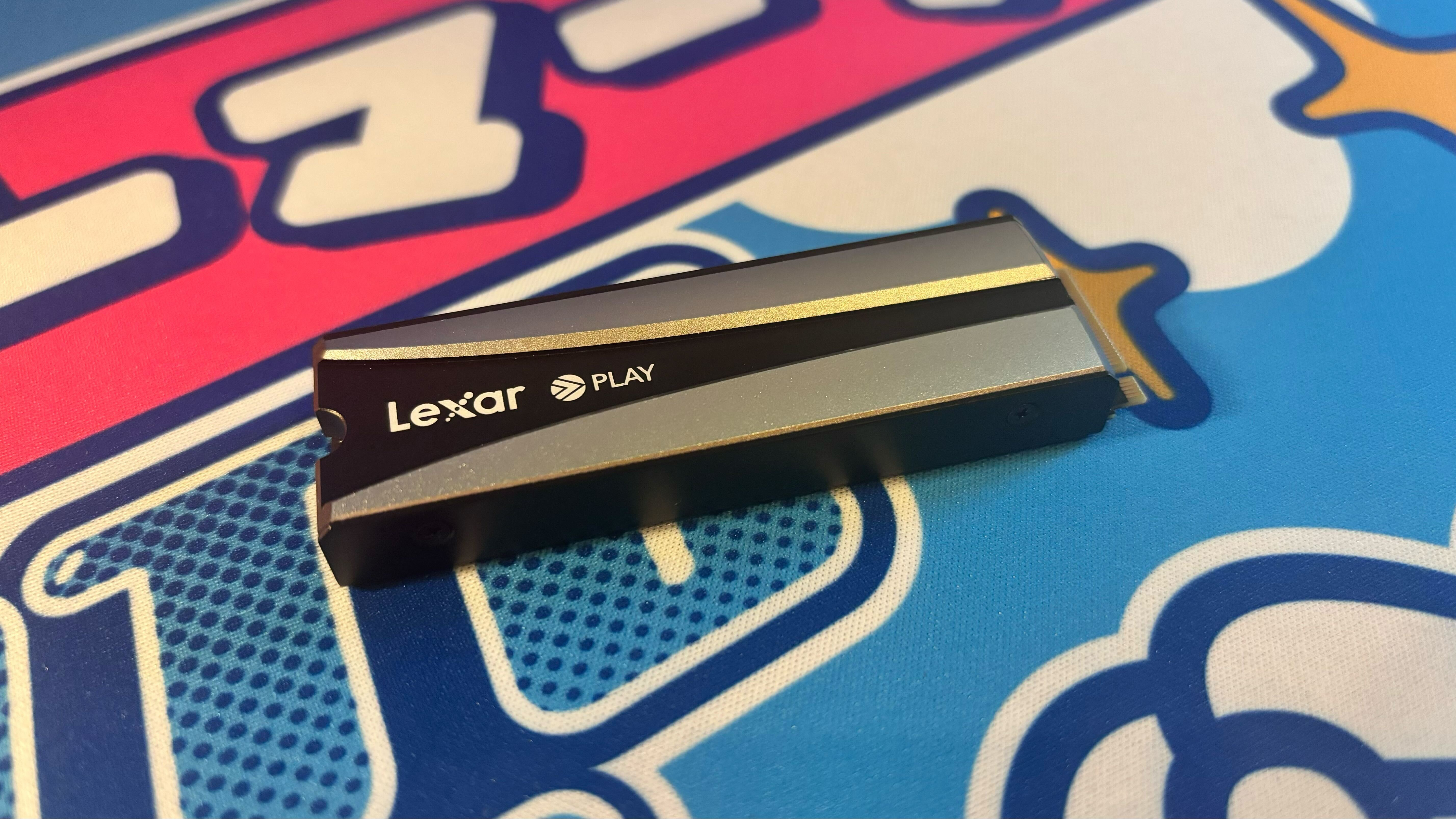
Should I buy the Lexar Play 2280?
Buy it if...
You want a high-capacity drive
The Lexar Play 2280 is available in both 2TB and 4TB capacities. This could make it a solid option to consider if you’re after a particularly large model for your game library.
You find it on sale
The one thing the Lexar Play 2280 needs to properly compete in the SSD space is a sizable price cut. If you can find it at the right discount, this model could be a great alternative to more premium options.
Don't buy it if...
You want top performance
The performance of the Lexar Play 2280 is fine for a HMB model, but it’s not what you would expect for the price. Consider high-end options like the Samsung 990 Pro if performance is your biggest concern.
Also consider...
If you want to weigh up the Lexar Play 2280 against some other options, here are two great alternatives.
| Row 0 - Cell 0 | Lexar Play 2280 | Seagate Game Drive M.2 SSD for PS5 | Samsung 990 Pro |
| Price | $229.99 / £174.99 (2TB) / $379.99 / £329.99 (4TB) | $99.99 / £99.90 (1TB) / $159.99 / £159.90 (2TB) | $169.99 / £155 / AU$265 (1TB) / $289.99 / £283.99 / AU$439 (2TB) |
| Capacity | 2TB / 4TB | 1TB / 2TB | 1TB / 2TB / 4TB |
| Quoted read speed | 7,400 MB/s | 7,300 MB/s | 7,450 MB/s |
| Quoted write speed | 6,500 MB/s | 6,000 MB/s | 6,900 MB/s |
| Durability | 6400 TBW (4TB) | 1275 TBW (1TB) | 600 TBW (1TB) |
| Warranty | 5-year | 5-year | 5-year |
Seagate Game Drive M.2 SSD for PS5
The Seagate Game Drive M.2 SSD for PS5 is a great officially licensed pick. It loses out in terms of capacity, with just 1TB and 2TB options, but is worthwhile if you want a drive that will deliver flawless PS5 performance.
For more information, check out our full Seagate Game Drive M.2 SSD for PS5 review
Samsung 990 Pro
The 4TB model of the Samsung 990 Pro is often available on sale for around the same price at the Lexar Play 2280. It’s significantly faster, features DRAM, and has a more stylish overall design.
For more information, check out our full Samsung 990 Pro review
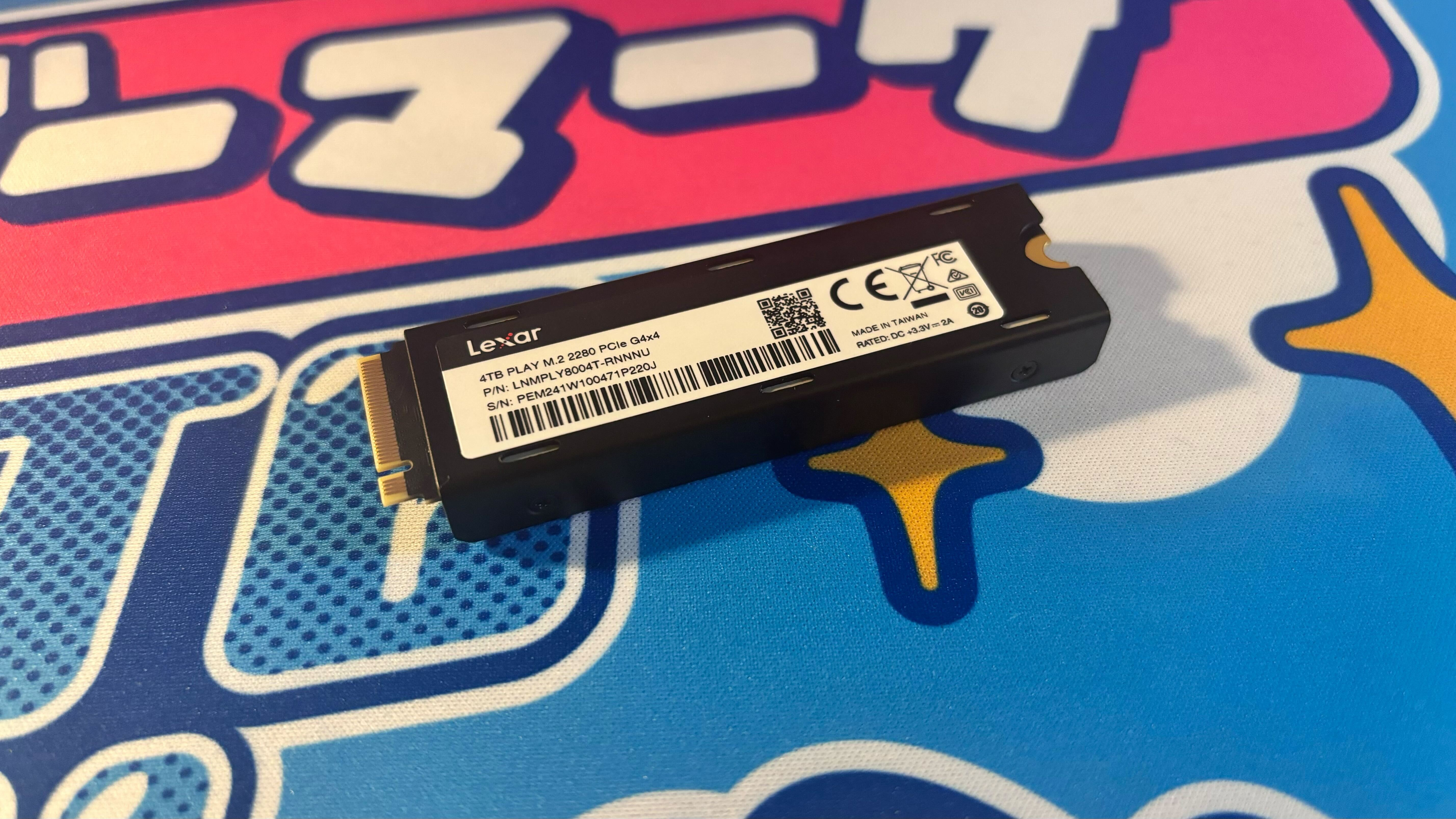
How I tested the Lexar Play 2280
- Used for over two weeks
- Tested daily in my PS5
- Compared to other SSD models
I tested the 4TB Lexar Play 2280 for over two weeks, fitting the drive to my personal PS5 and ensuring that it was used during my daily play sessions. During that time I was careful to assess the performance of the drive, both in-game and when moving a wide variety of files around on the system. I also recorded the data from the in-built PS5 storage benchmark.
I constantly compared the experience using the drive to my previous hands-on testing with a wide range of other PS5 SSD models. This included the Samsung 990 Pro, WD Black SN850, WD Black SN850P, Seagate Game Drive M.2 SSD for PS5, Samsung 980 Pro, and more.
First reviewed October 2024.

Dash is a technology journalist who covers gaming hardware at TechRadar. Before joining the TechRadar team, he was writing gaming articles for some of the UK's biggest magazines including PLAY, Edge, PC Gamer, and SFX. Now, when he's not getting his greasy little mitts on the newest hardware or gaming gadget, he can be found listening to J-pop or feverishly devouring the latest Nintendo Switch otome.
